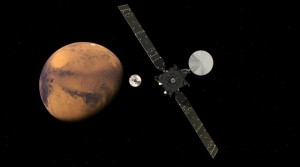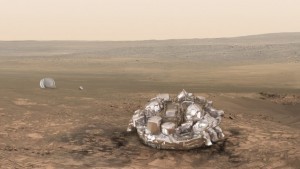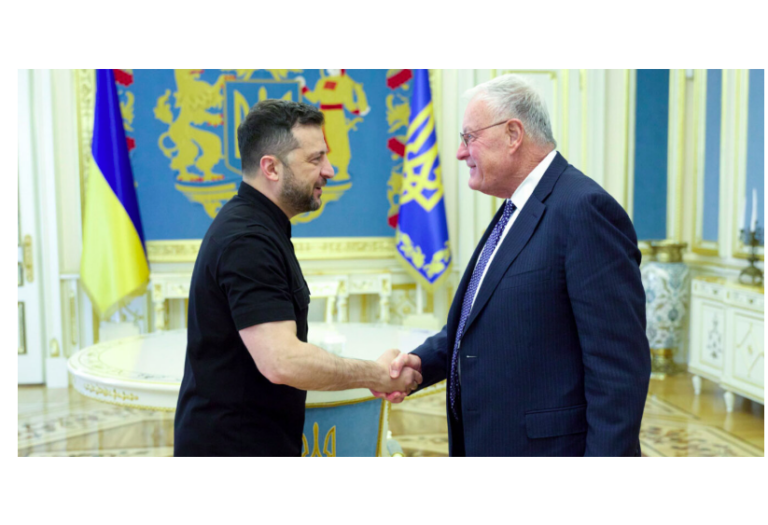The European Space Agency (Esa) is getting ready to put a probe on Mars.
Its Schiaparelli robot will attempt the risky descent to the surface in the coming hours, after a 500 million km journey from Earth.
The touchdown is regarded as a dress rehearsal for a much more important venture in four years’ time when Esa will bid to place a very expensive rover on the planet.
This six-wheeled vehicle will drill beneath the surface to search for life.
Getting the smaller Schiaparelli robot down ought to be the simpler affair. But as the scientific record shows, Mars is not the most welcoming of places, even for the most sophisticated of hardware.
The majority of missions despatched to Earth’s near neighbour have failed. Many have missed their target; others have crashed.
Touchdown should occur at 14:58 GMT (15:58 BST; 16:58 CEST). If the Indian facility can still hear Schiaparelli at the top of the hour, it will mean the Italian-built module is safely on Martian terrain. “Everybody’s smiling, everybody’s optimistic but you can sense the tension as well,” said Mark McCaughrean, Esa’s senior science advisor.
“I think as the hours tick by now towards that moment – to those six minutes as we plummet through the atmosphere – there’s going to be a lot more nerves. But we’re going to do this because it teaches us hard lessons about how to operate in space.” Schiaparelli will do some meteorological work for as long as its batteries remain charged. That should be a few days. This solar-powered robot will spend several months drilling below the surface in a number of locations to search for the presence of microbial organisms. This is a joint affair with Russia. Its space agency, Roscosmos, launched Schiaparelli and its mothership, the Trace Gas Orbiter (TGO) from Earth earlier this year. And it will do the same for the forthcoming rover. Russian scientists also have instrumentation spread across the different spacecraft. While the media and public will of course focus on Schiaparelli on Wednesday, it is actually the TGO that represents the main interest for Esa this time around. TGO plans to spend the coming years studying the behaviour of gases such as methane, water vapour and nitrogen dioxide in the Red Planet’s atmosphere.
source: BBC.com
Ask me anything
Explore related questions







